Washing a mattress cover in a washing machine
 The function of a mattress cover is to protect the product from excess moisture, dust, bacteria and other things. However, if you do not care for it properly, everything will be quite the opposite: the condition of the mattress will deteriorate. Hence the questions: is it possible to wash a mattress cover in a washing machine, and how to dry and iron it later, especially if the product is sophisticated?
The function of a mattress cover is to protect the product from excess moisture, dust, bacteria and other things. However, if you do not care for it properly, everything will be quite the opposite: the condition of the mattress will deteriorate. Hence the questions: is it possible to wash a mattress cover in a washing machine, and how to dry and iron it later, especially if the product is sophisticated?
First we study the shortcut
Good old-fashioned tags are sewn on for a reason. The set of icons on them is the result of long and painstaking work, inspections, testing on the part of the manufacturer. As a rule, all the necessary care information is reflected on the label: whether it can be washed, how to wash it, etc.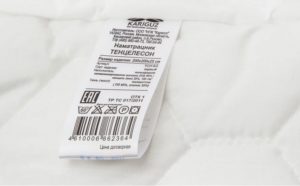
If for some reason the tag is no longer there (you cut it off and threw it away upon purchase, for example), try to find the packaging for the mattress cover, where the main information is often printed, or some booklet that may have come with the mattress and has been preserved.
The frequency of washing is a purely individual phenomenon. It all depends on who sleeps on the mattress, how they sleep, etc. For example, if there is no sheet or bedspread on top, whatever, of course, you need to wash the mattress cover more often, because the human body contains particles of various contaminants. In this case, the mattress cover should be washed together with the bed linen. It is also often necessary to wash products on which people who sweat excessively sleep. In other cases, you can wash the mattress cover once a quarter or even once every six months, or in the case of isolated serious stains.
Washing a moisture-resistant product
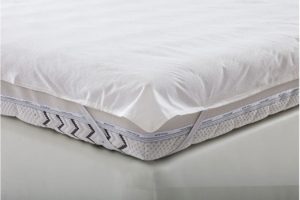 The concept of “moisture resistance” immediately evokes associations that prohibit washing. However, it is completely in vain.Such a product can and should even be washed in a machine, if the manufacturer’s label does not prohibit such a procedure. Why are some waterproof covers washable and others not? It's all about their complex structure: one of the layers is a polyurethane membrane, and the remaining layers are varied and differ from manufacturer to manufacturer. Some of them are suitable for automatic washing, while others are not. If there is no hint on the label that prohibits washing, follow these rules:
The concept of “moisture resistance” immediately evokes associations that prohibit washing. However, it is completely in vain.Such a product can and should even be washed in a machine, if the manufacturer’s label does not prohibit such a procedure. Why are some waterproof covers washable and others not? It's all about their complex structure: one of the layers is a polyurethane membrane, and the remaining layers are varied and differ from manufacturer to manufacturer. Some of them are suitable for automatic washing, while others are not. If there is no hint on the label that prohibits washing, follow these rules:
- wash at the coldest water temperature - limit 40 degrees;
- no bleaches, rinse aids, conditioners or other aggressive household chemicals; find the most gentle product on your shelf, better yet, something for caring for children’s things;
- It is generally better to wash small stains with ordinary soap; to be safe, you can use laundry soap;
- wash the product separately from other items;
- The mode should also be the most gentle; choose Delicate or Hand wash, which does not involve spinning or drying.
You can only wring out the mattress cover by hand! Dry in a dark room away from sources of heat and light. However, very low temperatures are also not welcome.
Important! As for ironing, it is not recommended to iron a waterproof mattress cover. But, in general, you don’t need ironing. Due to the polyurethane layer, the product practically does not wrinkle during washing, especially if you gently wring it out by hand.
We take into account the characteristics of the material
As you probably already understood, there are three types of mattress covers: synthetic, semi-synthetic and purely natural. Of course, the basic washing parameters depend on the material.
- Covers made from cotton and other natural fabrics require washing in cold water, as hot water can cause shrinkage. The optimal temperature is 30-40 degrees.
- Mattress covers with the addition of bamboo need the most careful washing. Of course, no spinning or drying! Even when squeezing such a mattress by hand, try not to use too much force or twist the product.
- The most unpretentious material is microfiber. It survives temperatures up to 60 degrees and can easily tolerate ordinary powders and even bleaches.
Note! If you are unsure about the material of your mattress pad, follow the general washing rules described in the paragraph above.
If the material contains wool
In general, there should be no problems with automatic washing of a mattress cover, especially a wool one, since almost any automatic washing device has a special program. Wool can act both as a filler and as an upholstery; it can be camel or sheep. It does not matter.
The main thing in this case is not to set it to spin or dry. The product must be wrung out by hand and very gently, otherwise the fibers will be damaged and the mattress cover will become unusable.
If the contamination is local, it is better to rub the stain manually using soap. Washing is necessary if the mattress cover smells unpleasant, and wool absorbs odors very much.
Thick mattress covers
Thick covers made of foam rubber or latex cannot be washed automatically! The same goes for coconut bark toppers. It is better to buy a mattress with similar characteristics and put a regular cover on it, then there will be fewer difficulties.
As for drying, it is not recommended to hang mattress covers: it is better to lay them horizontally and straighten them well. In small apartments this is not entirely convenient, but there is nowhere to go.
Removing difficult stains
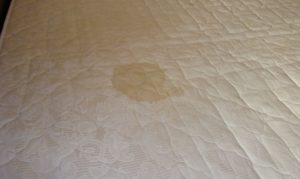 Of course, if the stain is small and the rest of the case is clean, you need to know how to remove such stains manually.
Of course, if the stain is small and the rest of the case is clean, you need to know how to remove such stains manually.
- Urine stains are usually removed the first time with cold water and household soap. In extreme cases, you can prepare a solution of lemon and salt, leave for three hours and rinse. And no trace remains!
- Blood. It's more difficult with blood. A fresh stain will be removed almost instantly with a stream of cold running water. But if the contamination is old, you will have to use a lot of stain removers.
- Coffee and tea stains can be easily removed with vinegar. True, it will smell unpleasant for some time, but it will quickly disappear.
Don't let serious stains eat into the fabric. Otherwise, removing them will be much more difficult and costly.
Interesting:
Reader comments
- Share your opinion - leave a comment

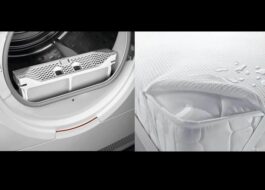
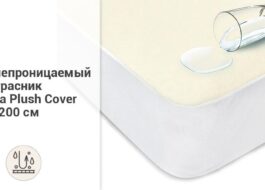


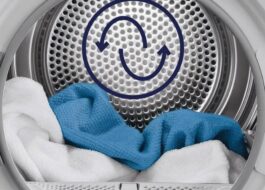















Add a comment